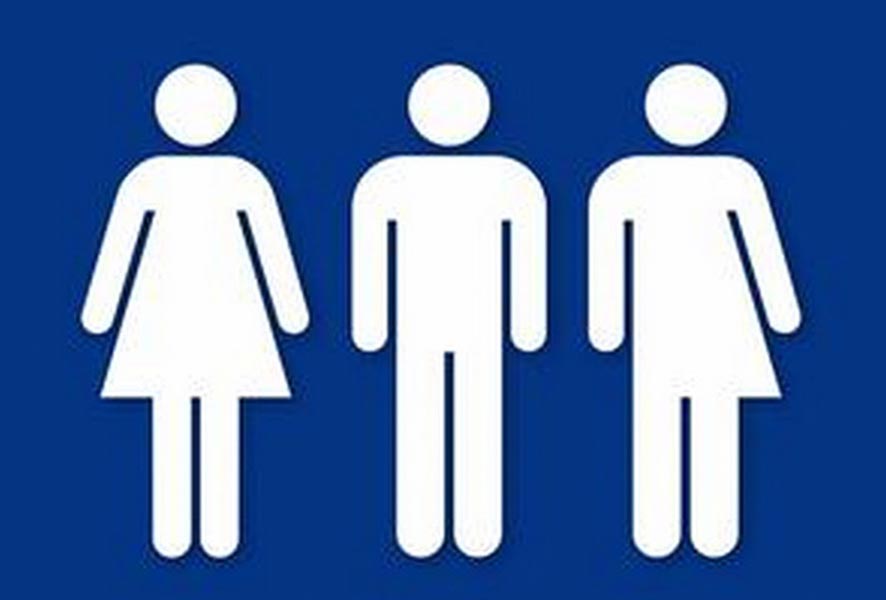In November 2015, then-Philadelphia Mayor Michael Nutter signed a law requiring all new and renovated city buildings to scrap “men’s” and “women’s” bathrooms for gender-neutral bathrooms, a move in line with other major cities across the country such as Seattle, Washington, D.C., and Austin, Texas. Not yet known is to what extent this law has been effectively policed, or the number of $2,000 fines issued for non-compliance.
However, this law raises an interesting question for other public and private Philadelphia institutions, specifically our public schools: Should they also have gender-neutral bathrooms as an option for students, faculty and staff? And if the answer is yes, then should all their restrooms be converted to gender-neutral restrooms, or only some? The second question is more policy-based and something that should be decided by people with knowledge about the logistics and cost of any proposed conversion.
In fact, it is the first question that is of more importance to me, because inherent in it is a question about the moral bent of our society. That language may seem grandiose, but tied up in discussions of gender and sex politics are questions of morality and ethics. For example, those against bathroom choice or bathroom neutrality hurl invectives at transgender people whom they deem dangerous to society, specifically women and children. They are making a moral argument against bathroom choice and gender-neutral bathrooms. Therefore, I want to meet them on their own moral terms. To be clear, I want to limit my advocacy in this piece to gender-neutral bathrooms in high schools. Colleges, public and private, have different choices to make and are not necessarily under the legal purview of Philadelphia City Council. And, while I may want to see gender-neutral bathrooms extend down to even elementary schools, this does not seem to be a political reality right now.
Quite simply, Philadelphia public and private high schools should be mandated to provide gender-neutral bathrooms to their students, staff and faculty, not as an option or alternative to “traditional” men’s and women’s bathrooms, but as their standard restroom for all. Ideally, this would take the form of single-stall bathrooms and common sinks, but I do not want to get distracted by the nitty gritty, and want to focus on why these bathrooms are a necessity.
Our current sex-binary bathrooms hinge on flimsy moral ground and are based on a homophobic misunderstanding. First, the idea that bathrooms are currently divided by “the two genders” is incorrect. They are split by sex — anatomical, biological sex. The concept of gender is much more than organs or chromosomes and involves complex dynamics of expression and identity. Gender expression is how one displays gender to the world, and identity, one’s internal understanding of one’s own gender, requires thought as an individual and develops in conversation with the world outside one’s self. Without entering too far into academia, the concepts of sex, gender expression and gender identity are three distinct and individual markers of one’s larger identity, which also includes race, ethnicity, age and other things. Our bathrooms are currently split as though the concept of women-ness is stable and in line with sex, gender expression and identity. And to be fair, for some people that is true — they have female sex organs, identify and express as a woman. But for others that is not true, and they are the ones in need of gender-neutral bathrooms.
As those in opposition to bathroom neutrality and freedom have argued, the idea that gender-neutral bathrooms pose a risk to women because men will use it as a way to prey on them is completely false, not based on criminal evidence and homophobic. All men are not naturally searching for women in a sexual way, and the idea that men are also preying on women in general is a sign of our culture of rape and violence towards women. That claim says more about straight, cisgender men than it does about the transgender community.
Finally, there has been a swift invocation by those in favor of gender-neutral bathrooms of the civil-rights movement of the 1960s and the racially segregated bathrooms of the time. I find this comparison more instructive about the psychology of discrimination than useful in comparing race and gender as oppressed entities. The racially discriminated bathrooms of Jim Crow were based on the inherent belief that people of color were inherently different from and also inherently dangerous to white people. The logic of bathroom sex distinction is similar: Men and women are inherently different, and also men are inherently after women. I would argue men and women are actually not different, actually want the same things from life, and using a restroom, a simple request, does not need to be loaded with the baggage of superficial sex difference. Philadelphia high schools need gender-neutral bathrooms because the logic of sex-differentiated bathrooms does not follow.
I will conclude with this: If we are indeed going to continue to allow a hegemonic gender binary regime derived from misogyny, heterosexism and homophobia control and restrict the fulfillment of human capacity, then certainly we must continue to allow that same regime to control our very base needs in the restroom. However, if we allow for a modicum of progressive, left-leaning imagination to take over, regardless of practicality or use, but simply based on the desire to fulfill the needs of a forgotten collective as the gender non-conforming/gender-queer/gender-neutral community, then we can have our city on a hill, our community of friendship and a city of brotherly (sic) love.
Matthew Zarenkiewicz, 21, is a senior at Villanova University studying humanities and is in the Institute for Global Interdisciplinary Studies and Honors Department. He is also a co-chair for VU Pride, Villanova’s LGBTQ+ and ally organization.
